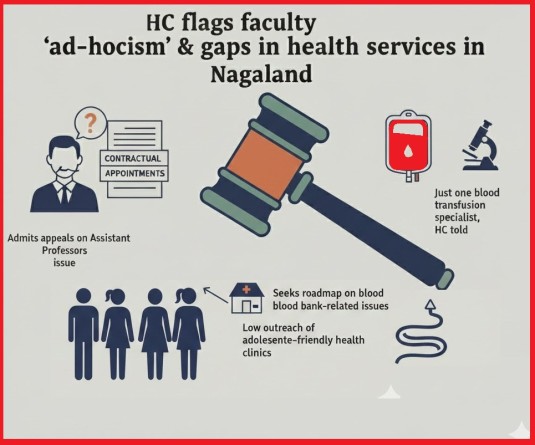
Bonnie Konyak
Dimapur | March 19
The power situation in Nagaland seems to be a “power-play” with 100 percent ‘power’ being ultimately controlled by the Centre through its agencies like the North East Electric & Power Corporation (NEEPCO) and NHPC who have a monopoly even over Doyang HEP which generates 75 MW of power, the exact requirement of the State. However, the Central Policy of power sharing has limited Nagaland’s share of the power from its very own Doyang HEP to a meager 7 MW while a large percentage of the power is distributed to other states in the North East while Nagaland has very little say in the use of the surplus power that may be generated from its own State.
Terming the Centre’s policy of power sharing as an exploitation and a conspiracy of the Government of India, a source from the power department said, “Electricity means economic power, and this the Centre knows very well” and added that with the economic boom in India, very soon the power demand of mainstream India would shoot up to one lakh MW and right now North East was the only area in which there is still potential for power to be tapped. Due to this very reason the Centre is trying its best to take ownership of the state’s natural resources. An example of this agenda of the Central government is the project of 22.92 MW HFO based Thermal power plant in Chumukedima, a bye-product of Atal Bihari Vajpayee’s visit in 2003 the funding of which had been stopped by the Centre after a huge amount of effort and money had been put into it. A rough estimate of Rs 10 crores has already been wasted on the project which had been meant to meet the state’s power demand in during emergencies such as the one being faced by the State today. Departmental sources revealed that the Central government had demanded the project to be handed over to them when the department approached them for releasing the fund for the project and hence the department was unable to go ahead with the project for want of funds.
The departmental source said that the government of Nagaland needed to wisen up and develop its own internal generation of both hydro and thermal power and the proposed Hydro project at Tizu-Zunki of 150 MW should be taken up by the state saying “We can take it up if we have imagination without the state spending a single rupee.” Outlining the options that lay before the State like joint venture projects with intending power project developers or Public-Private Partnership (PPP) the State would not be held ransom by the Centre’s monopoly, and with the present universal demand for power the source added that all the state needed to do was strike the best deal. However under the present conditions, the power situation of Nagaland looks very bleak and the load shedding is likely to carry on until monsoon though the situation may slightly improve after completion of the annual maintenance work at the Likhimro HEP which is expected to be done by the end of March. But until the state government decides to step into the matter, the power department will have to continue in more or less the same manner with heavy load shedding during winter and maybe a slightly better summer that is, if the transformers does not break down from lack of maintenance.
Meanwhile, it is a no-win situation for the Nagaland Power Department struggling under immense shortage of technical and water resources in the State and with very little hope of productive intervention from the clueless bureaucrats and policy makers. Against the total power demand in Nagaland of 76 Megawatts (during peak hour), the total availability of power is just 30 Megawatts, which comes to less than half of the State’s total power demand. A source from the power Department revealed that the present load shedding in Dimapur and Peren is due to gross departmental negligence caused over the last few years.
The source further disclosed that the shutting down of the transformer has very little impact on the actual overall power supply situation because of the already existing shortage of power caused by the scarcity of water. It was however mentioned that the department taking advantage of this dire situation decided to shut down the transformer for maintenance work, giving the transformer its first servicing in 25 years, since installation in 1982. It is therefore misleading to claim that the supply of adequate power is being caused due to the shut down of the transformer, the source informed.


.jpg)



